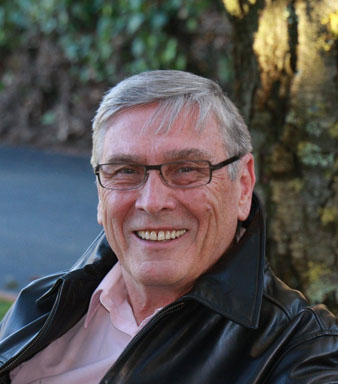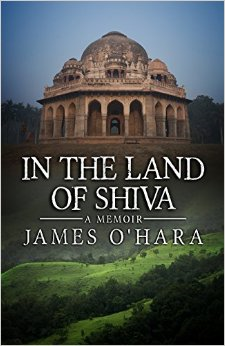NHI: Where Leaders Create Leaders!
By: Dr. Jeff Rockwell
Next month, NHI’s very own Jim O’Hara and Cynthia Ribiero will be presenting at the American Massage Therapy Association annual convention in Denver. Both Cynthia and Jim are “rock stars” in the field of massage therapy. Cynthia is a recent president of the AMTA and the developer of NHI’s Advanced Neuromuscular Therapy program. Jim not only has been at the forefront of developing educational programs for the profession for the past twenty years, but his book In The Land Of Shiva: A Memoir was recently released to rave reviews.
NHI is home to many of the best teachers in the field of massage therapy—by design. One of the most gratifying aspects of being part of this community is observing the number of students who go on to become leaders in their communities and in the profession. And two of the most prominent “leaders creating leaders” are Jim and Cynthia.
For this blog, Jim O’Hara was interviewed. I’m sure you’ll find his comments enlightening!

Jeff Rockwell: Jim, you and Cynthia Ribeiro are giving a (sold-out) workshop at the National AMTA convention this September on “Instructional Design” for massage teachers.
What’s the backstory on this? Why is this topic so crucial and so in-demand?
Jim O’Hara: Teachers the world over really want to do a good job in the classroom, but are not always given the tools they need. It’s unfortunate that in some massage schools, the eager teacher is simply handed a text book and told to teach from it.
While some publishers now offer lesson plans for teachers using their books, seldom do those lesson plans exactly fit the needs of the particular school. Teachers are left wondering how to take a lengthy chapter and put the material into 4-hour classes.
JR: So, why is NHI leading this training?
JOH: At NHI, we have a long, successful history of designing classes. Part of the reason is that we have been in business for 30+ years, and have had to create effective classes long before the relatively recent explosion of textbooks geared to massage schools! It may surprise you, but many schools do not have a full-time Curriculum Coordinator, nor a full-time Teacher Trainer on their staff as NHI does, and has had for many years. Put simply, I believe we really do know what we are doing in the area of curriculum and training.
JR: Why you and Cynthia?
JOH: My 20+ years at NHI both as instructor and the former Curriculum Coordinator are the background I bring to this, as well as my own graduate studies in education. Cynthia had run her own 1000-hour school for 20 years previous to coming to NHI, and has long taken a leadership role in the AMTA, so she knows well the needs of massage schools in the country. Also, both Cynthia and myself recently spent over 2 years on a nationally-selected panel of experts who created a blueprint for what the core pieces of massage education are.
JR: Can you give us some key ideas from the workshop you are presenting at the Denver convention?
JOH: Two of the most important concepts in designing a class are these: Scaffolding and Anchoring. “Scaffolding” means to structure each piece of information or skill-training in “bite-sized” pieces that build on each other.
A simple example of this would be how we teach our Swedish sequence. One Swedish massage class is just practice on learning moves like effleurage. The next class applies those strokes to the back. The following class reviews the back, and applies the strokes to the legs, and so on until we have a “full body” Swedish massage! This is clear scaffolding, and is obvious for learning a sequence. Perhaps not so clear is the importance of scaffolding to learn physiology, or business practices, or customer service.
JR: Tell us about “anchoring.”
JOH: “Anchoring” is making sure there is an activity that solidifies the concept or skill in our minds and/or bodies. For example, the instructor may explain the characteristics that differentiate between muscle Origins and Insertions. An anchoring activity could be to have students partner up and explain these distinctions to the other person – perhaps multiple times if that’s what it takes Jeff. Again, the instructor might talk about the importance of “weight transfer” for proper body mechanics, demonstrate it, and then have everyone stand and do it even though they are not actually doing massage at the moment.
JR: Aren’t these concepts pretty basic? Don’t all teachers automatically do them?
JOH: The “anchoring” activity is often forgotten, or left until the end of the class, because the teachers feel they must “cover” so much material. The most powerful anchoring activities, interactive exercises, are short, and done “in the moment.”
I like to think that NHI instructors do see these concepts as basic, because they are so often already built into our lesson plans and are part of our teaching culture. Come to the convention!
Thank you Jim!
Look for our next interview with Cynthia Ribiero. And remember: Be. Here. Wow!
